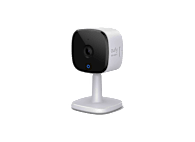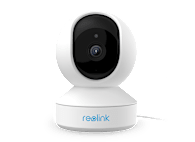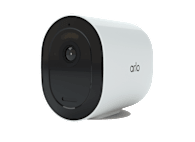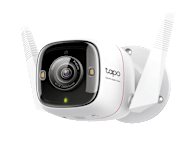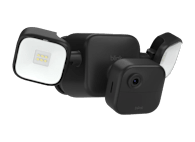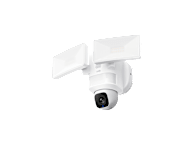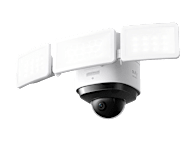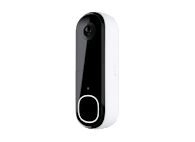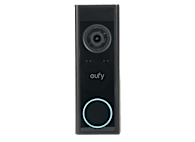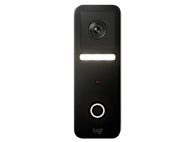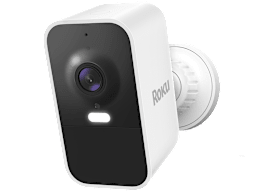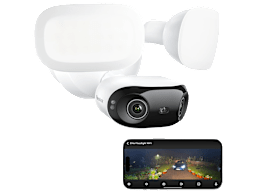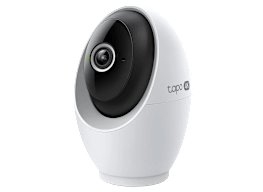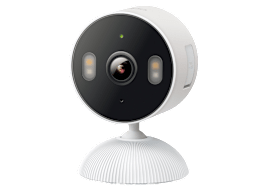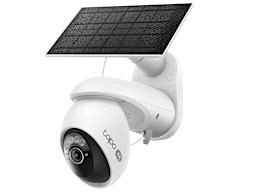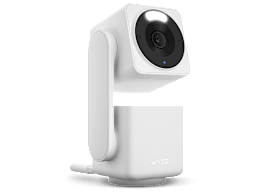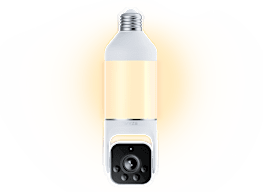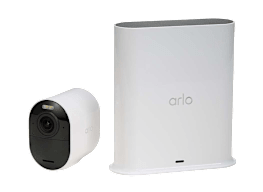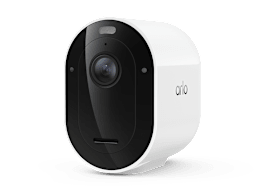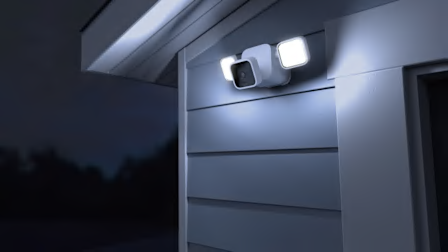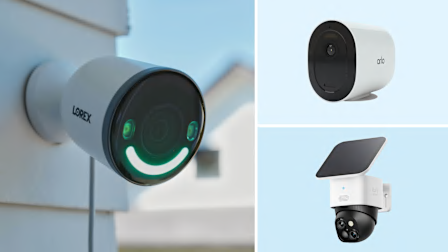16 Best Home Security Cameras of 2025, Lab-Tested and Reviewed
Consumer Reports tests security cameras and doorbell cameras for data privacy, security, video quality, and more
When you shop through retailer links on our site, we may earn affiliate commissions. 100% of the fees we collect are used to support our nonprofit mission. Learn more.
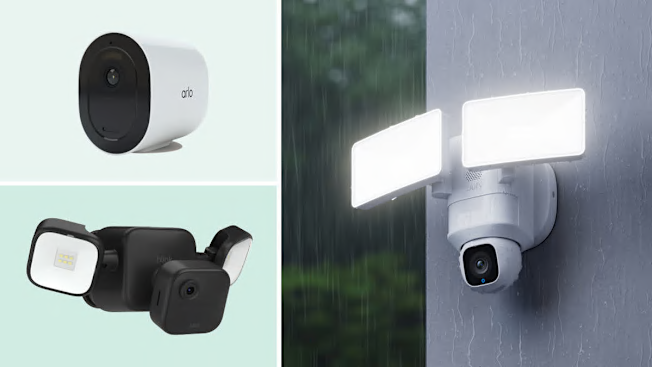
Security cameras are a great way to keep an eye on your home, spot potential intruders, and even scare off porch pirates.
Below you’ll find reviews of the 16 best home security cameras from our ratings, including indoor, outdoor, floodlight, and doorbell cameras. On the list, which is grouped by type and sorted in alphabetical order, are models made by Arlo, Blink, Eufy, Reolink, and TP-Link, among others. Unfortunately, you can’t rely purely on a brand name when you’re making choices—many companies make both top-notch wireless security cameras and others that we can’t recommend.
Keep in mind that the “wireless” in wireless security cameras refers to their WiFi connectivity, not their power source. The list below includes models that are battery-powered and others that are wired. These are either plugged into an outlet or, for most floodlight cameras, hardwired into a junction box.
The wireless security cameras listed below all feature night vision, high-definition video, voice and app control via smart home systems, and two-way audio. CR members can view ratings for these models below, or for a deeper dive, go to our full home security camera ratings.
These products can help keep your home safer from intruders, but there’s a trade-off because the footage these streaming video cameras collect may not always be secure—or private—from the companies that make them. That’s why we evaluate them for data security and data privacy. After all, “these cameras are capable of capturing and transmitting very sensitive data,” says Steve Blair, a CR test engineer for privacy and security.
Regardless of the model you choose, read our guide on how to prevent security cameras from being hacked. For more information on our testing and advice on choosing a security camera, see our home security camera buying guide.
Best Indoor Security Cameras
Here are the four best indoor security cameras from our tests. All of them offer free, local video storage and need to be plugged in for power. All but one offer pan-and-tilt functionality so that you can move them around to see different parts of a room.
Free video storage: Yes, on a microSD card (sold separately), or on a hard drive with a capacity of up to 16 terabytes with an optional HomeBase S380 hub available for $150 (hard drive sold separately).
Optional subscription costs: With a Eufy Cloud Storage plan, you can get 30 days of cloud storage that covers one camera for $4 per month or unlimited cameras for $14 per month. You can subscribe to the same plans annually for $40 and $140 per year, respectively.
The Eufy Indoor Cam C120 has a 2K camera sensor that produces very good video quality, and the camera boasts an excellent response time. The camera supports night vision with customizable activity zones and has two-way audio, allowing you to remotely engage with family members or intruders. It scores very well in our data security tests.
The C120 has a bevy of smart features, too, including AI-powered people and animal detection. It can even detect abnormal noise levels, such as a baby crying, and will deliver a detailed notification about the event. The camera accepts microSD cards for local recordings and it works with the Eufy HomeBase S380 hub, $150, for storage on a hard drive (hub and hard drive sold separately). It also supports cloud backups for recordings with an optional monthly or annual subscription. You can control the C120 through your major smart home platform of choice, including Amazon Alexa, Apple Home, and Google Home.
Free video storage: Yes, on a microSD card (sold separately), or on a hard drive with a capacity of up to 16 terabytes with an optional HomeBase S380 hub available for $150 (hard drive sold separately).
Optional subscription costs: With a Eufy Cloud Storage plan, you can get 30 days of cloud storage that covers one camera for $4 per month or unlimited cameras for $14 per month. You can subscribe to the same plans annually for $40 and $140 per year, respectively.
The Eufy Indoor Cam E30 delivers a rich suite of features, including a 4K resolution camera that earns very good scores in our tests. It supports color night vision with an integrated spotlight to help with clarity. Its above-average score for smart features comes from a solid set of AI capabilities like people, pet, and sound detection, plus automated panning and tilting motors, allowing the E30 to track subjects around the scene. You can sound a siren and engage in two-way audio communication. Like most Eufy home security cameras, you can view live footage and store clips using a microSD card for no additional charge, connect it to a Eufy HomeBase S380 hub for storage on a hard drive, or pay for optional cloud storage. It’s compatible with Amazon Alexa, Apple Home, and Google Home.
Free video storage: Yes, on a microSD card with a capacity of up to 128 gigabytes (sold separately).
Optional subscription costs: None.
The Reolink E1 Pro is an inexpensive pan-and-tilt security camera that performs well in our tests, receiving excellent scores for video quality and response time, and a strong score for data security. This wired camera features local storage on a microSD card, 24/7 recording, people and pet detection, a siren, activity zones, and voice/app control via Amazon Alexa and Google Home. In addition to microSD card storage, this camera can store videos on Reolink network video recorders.
Free video storage: Yes, on a microSD card with a capacity of up to 256 gigabytes (sold separately).
Optional subscription costs: Through a Kasa Care plan, you get 30 days of cloud storage for one camera for $3 per month (or $30 per year) or 30 days of storage for up to 10 cameras for $10 per month (or $100 per year).
The TP-Link Kasa Smart Pan & Tilt KC410S 24/7 security camera offers stellar video quality and quickly sends alerts when motion is detected. This low-priced camera also earns a strong rating for data security and a midrange rating for data privacy in our tests. It features voice and app control via Amazon Alexa and Google Home/Assistant, two-way audio, monitoring zones, person alerts, and alerts for loud noises.
For another highly rated TP-Link security camera that supports Apple Home, consider the TP-Link Tapo C225.
Best Outdoor Security Cameras
Certain models from Arlo, Eufy, and TP-Link top our outdoor camera ratings. All but one of these cameras run off batteries, allowing you to mount them anywhere within WiFi range. There is even an option with cellular service for truly off-the-grid security.
Free video storage: Yes, on a microSD card with a capacity of up to 2 terabytes (sold separately).
Optional subscription costs: Through an Arlo Secure Plus plan, you can get 60 days of cloud video storage for $10 per month for one camera or $20 per month for unlimited cameras. You can add more features, such as in-app emergency response buttons, with Arlo Secure Premium for $30 per month. You can try Arlo Secure free for 30 days, and all plans receive slight discounts if you purchase an annual plan.
The battery-powered Arlo Go 2 LTE WiFi delivers outstanding video quality in CR’s tests. It also has top-notch data security and response time scores, though its data privacy rating is lackluster. This model features a built-in siren, a rechargeable battery, and voice and app control (via Amazon Alexa and Google Home).
With an Arlo Secure subscription, you can also get 60 days of cloud video storage for motion-triggered video clips, plus additional features such as custom activity zones; person, package, vehicle, and animal detection; smoke/CO alarm detection; and custom detection that lets you teach the camera to detect things like a garage door opening or sprinklers turning on. The Premium plan includes everything previously discussed, as well as emergency response buttons in the Arlo app (to request police, fire, or medical services), professional monitoring for Arlo security systems, and access to the Arlo Safe personal safety app.
Free video storage: Yes, on a microSD card (sold separately), or on a hard drive with a capacity of up to 16 terabytes with an optional HomeBase S380 hub available for $150 (hard drive sold separately).
Optional subscription costs: With a Eufy Cloud Storage plan, you can get 30 days of cloud storage that covers one camera for $4 per month or unlimited cameras for $14 per month. You can subscribe to the same plans annually for $40 and $140 per year, respectively.
The Eufy Solo Cam S230 was built for the outdoors. The battery-powered camera uses a top-mounted solar panel for continuous operation and withstands the elements with IP65 water and dust protection. You can install the camera virtually anywhere on your property, thanks to a simple snap-on mounting system. While it has basic AI detection with customizable zones, it earns a subpar score for smart features in CR’s tests.
The S230 has a 2K camera sensor that offers top-notch recording quality with color night vision. It also has superb responsiveness, and the camera will automatically shine its 600-lumen spotlight when it detects movement. Consumer Reports gives it a strong score for data security, partly because it operates completely locally with on-device AI processing and 8 gigabytes of onboard encrypted storage, no cloud subscription required. That said, it manages only a below-average data privacy score. In addition to its microSD card slot, you can store footage on a Eufy HomeBase S380 hub (hard drive sold separately), or pay for optional cloud storage.
Free video storage: Yes, on a microSD card with a capacity of up to 512 gigabytes (sold separately).
Optional subscription costs: With a Tapo Care Premium plan, you get 30 days of cloud video storage starting at $3.49 per month (or $35 per year) for one camera and going up to $12 per month (or $120 per year) for 10 cameras.
The TP-Link Tapo C325WB is an outdoor security cam that performs exceptionally well in our tests. Its 2K-equivalent camera offers top-notch video quality, and it aces CR’s tests for response time by delivering notifications quickly when it detects motion. You can monitor your home at night thanks to its color night vision, facilitated by a built-in spotlight to illuminate the area. You can also sound a siren and use the two-way intercom to communicate with visitors. The C325WB musters just a midlevel score in our test for smart features, which include the ability to detect people, pets, and vehicles; customizable activity zones; and support for Amazon Alexa and Google Home.
The camera earns above-average data security scores, but it has a subpar data privacy score (an evaluation of the company’s published policies on how it handles personal data). It accepts microSD cards (up to 512 gigabytes) to store clips locally for free, or you can pay monthly for Tapo Care Premium, which nets you 30 days of cloud video storage and rich notifications that show snapshots from your camera feed for up to 10 devices. The C325WB needs to be hardwired for continuous power and supports Ethernet connectivity in addition to WiFi.
Free video storage: Yes, on a microSD card with a capacity of up to 256 gigabytes (sold separately).
Optional subscription costs: Through a Tapo Care Premium plan, you get 30 days of cloud video storage, starting at $3.49 per month (or $35 per year) for one camera and going up to $12 per month (or $120 per year) for 10 cameras.
The TP-Link Tapo C420S2 performs well across the board in our tests for video quality, response time, and data security. Its data privacy is subpar, but that’s a common problem with security cameras in our tests. This battery-powered two-camera kit features color night vision, activity zones, person detection, pet detection, vehicle detection, a built-in siren, voice/app control via Amazon Alexa and Google Home, and free local video storage on a microSD card. You can also pay monthly for Tapo Care Premium, which nets you 30 days of cloud video storage and rich notifications that show snapshots from your camera feed for up to 10 devices.
For more highly rated outdoor options, see our guide to the best outdoor security cameras.
Best Floodlight Security Cameras
Floodlights are generally mounted in spots perfectly suited for security cameras, high up with wide views of important areas like driveways and walkways. That makes floodlight security cameras a winning combination. Most need to be hardwired for power, which can limit their placement, but we have one Top Pick that runs off batteries.
Free video storage: Yes, with Blink Sync Module 2 (sold separately) and on a USB flash drive with a capacity of up to 256 gigabytes (sold separately).
Optional subscription costs: With a Blink Subscription Plan, you get 60 days of motion-triggered video clips for one camera for $3 per month (or $30 per year) or 60 days of motion-triggered video clips for unlimited cameras for $10 per month (or $100 per year).
Like its predecessor, the Blink Outdoor 4 Floodlight Camera is actually just the Blink Outdoor 4 security camera connected to a floodlight mount (you can even buy the mount separately). The whole kit runs off batteries, meaning you can place this floodlight just about anywhere outside your home. In our tests, this Blink model receives superb scores for response time and data security, and a very good score for video quality. This Blink’s features include activity zones, voice/app control via Amazon Alexa, and up to 5 minutes of continuous live streaming at one time.
The version of this floodlight camera that we tested came with a Blink Sync Module 2, but Amazon now sells it with the new Blink Sync Module Core instead. Unlike the Sync Module 2, the Sync Module Core doesn’t let you store footage locally on a USB flash drive. If you want local storage without a subscription, that means you will now have to buy the Blink Sync Module 2 in addition to the camera.
With a Blink Subscription Plan, you will also gain person detection and photo snapshots between recordings, as well as the ability to store footage in the cloud, save recordings of your live streams, "instantly" watch recordings as soon as they’re done, and share recordings with others.
Free video storage: Yes, with Blink Sync Module 2 (sold separately) and on a USB flash drive with a capacity of up to 256 gigabytes (sold separately).
Optional subscription costs: With a Blink Subscription Plan, you get 60 days of motion-triggered video clips for one camera for $3 per month (or $30 per year) or 60 days of motion-triggered video clips for unlimited cameras for $10 per month (or $100 per year).
The Blink Wired Floodlight Cam is one of the newer entrants to the floodlight camera market. In our tests, it receives superb scores for video quality and response time, as well as a very good score for data security. It falls in the middle of the pack in terms of its smart features, but its data privacy is subpar (a common issue across brands in this space). Its features include a siren, monitoring zones, voice/app control via Amazon Alexa, and up to 5 minutes of continuous livestreaming at one time. You can also store footage locally without a subscription if you purchase a Blink Sync Module 2, $50, and plug in a USB flash drive.
With a Blink Subscription Plan, you will also gain person detection and the ability to store footage in the cloud, livestream your camera continuously for up to 90 minutes, save recordings of your livestreams, “instantly” watch recordings as soon as they’re done, and share recordings with others.
Free video storage: Yes, on a microSD card (sold separately), or on a hard drive with a capacity of up to 16 terabytes with an optional HomeBase S380 hub available for $150 (hard drive sold separately).
Optional subscription costs: With a Eufy Cloud Storage plan, you can get 30 days of cloud storage that covers one camera for $4 per month or unlimited cameras for $14 per month. You can subscribe to the same plans annually for $40 and $140 per year, respectively.
The hardwired Eufy Floodlight Camera E30 offers very good overall performance, with outstanding video quality and response times in CR’s tests. It has dual 2,000-lumen floodlights that can shine automatically when movement is detected, plus a 105 dB siren to deter intruders and a two-way intercom to speak with visitors. This 2K camera scores very well in our tests for smart features, too. It’s equipped with AI-powered subject detection for people and vehicles, customizable activity zones, and motorized pan and tilt to keep them in view. It’s also compatible with Amazon Alexa and Google Home, so you can control the camera with your voice or alongside other devices from those smart home apps.
An IP65 rating means it’s sufficiently protected from the elements. The Eufy Floodlight Camera E30 gets a very good score for data security in our tests but only a so-so result for data privacy. You can use up to a 128-gigabyte microSD card to store clips locally, or rely on paid cloud storage. If you add the optional HomeBase S380, you can expand local storage up to 16 terabytes, which you’ll want to consider if you plan to take advantage of its 24/7 continuous recording capability.
For other highly rated options from Eufy, check out the Eufy S100 Wall Light Cam and Eufy Floodlight Camera E340.
Free video storage: Yes, using 8 gigabytes of internal memory.
Optional subscription costs: With a Eufy Cloud Storage plan, you can get 30 days of cloud storage that covers one camera for $4 per month or unlimited cameras for $14 per month. You can subscribe to the same plans annually for $40 and $140 per year, respectively.
The Eufy Floodlight Cam S330 is one of Eufy’s most expensive floodlight security cameras, though not its most feature-rich (see the Floodlight Cam E30, above). The S330 receives an excellent rating for response time and very good ratings for its video quality, data security, and smart features. It receives a midlevel rating for data privacy, which is common among security cameras we test. This camera features 8 gigabytes of local video storage, three individual 3,000-lumen floodlights with tunable color temperature and brightness, pan-and-tilt functionality, person detection, and the ability to lock onto and track subjects as they move around.
Want more floodlight options? Check out our guide to the best floodlight cameras.
Best Video Doorbell Cameras
Doorbell cameras let you remotely chat with visitors and keep an eye on package deliveries from your smartphone, and many can work with your home’s existing chime. Below, we’ve rounded up the best video doorbell cameras from our tests, in alphabetical order. All four can be hardwired, but two can run entirely on batteries at the expense of some features, like continuous and pre-roll recording. For more options, see our doorbell camera ratings.
Free video storage: None.
Optional storage plans: Through an Arlo Secure Plus plan, you can get 60 days of cloud video storage for $10 per month for one camera or $20 per month for unlimited cameras. You can add more features, such as in-app emergency response buttons and professional monitoring with Arlo Secure Premium for $25 per month. You can try Arlo Secure free for 30 days.
The Arlo Video Doorbell 2K is one of the company’s flagship doorbells. In our tests, it receives top marks for data security and response time, as well as a strong score for video quality. Its two weak spots are its lackluster data privacy and lack of certain smart features without a subscription. Its features include geofencing (to turn alerts on or off when you leave or return home), motion alert schedules, and voice/app control via Amazon Alexa and Google Home/Assistant. With an Arlo Secure subscription, this doorbell also gains cloud video storage and, depending on the plan, certain features like activity zones or smart alerts for people, packages, animals, and vehicles.
This Arlo doorbell has a rechargeable battery, but you can also hardwire it to a home’s doorbell wiring for continuous power and have it ring a home’s existing doorbell chime. A wireless, plug-in chime is also available separately for $50.
Free video storage: Yes, on a microSD card with a capacity of up to 128 gigabytes (sold separately), or on a hard drive with a capacity of up to 16 terabytes with an optional HomeBase S380 hub for $150 (hard drive sold separately).
Optional subscription costs: With a Eufy Cloud Storage plan, you can get 30 days of cloud storage that covers one camera for $4 per month or unlimited cameras for $14 per month. You can subscribe to the same plans annually for $40 and $140 per year, respectively.
The Eufy Video Doorbell C31 is a solid, relatively inexpensive battery-powered video doorbell with a 2K resolution camera that has above-par video quality and excellent response times. It also has very good data security but just so-so data privacy. It musters only a middling rating for smart features in CR’s tests, however, because it’s limited to basic person and motion detection.
The C31 features a quick-release battery that makes it easy to recharge, but hardwiring it to your existing doorbell wiring enables continuous power, 24/7 recording, and 5-second pre-roll footage from the moment someone approaches or rings the doorbell. The downside to enabling those features is that you’ll have to bypass your home’s existing chime, but you can pair it with Eufy’s add-on chime ($40) if you still need audible alerts throughout your home.
Once visitors ring the bell, you can get smartphone notifications that allow you to jump right into the live feed and greet visitors by voice, or trigger preset responses. The doorbell is compatible with Amazon Alexa and Google Home. You can store recordings entirely locally with a microSD card up to 128 gigabytes, no subscriptions required. The C31 supports Eufy’s Cloud Storage plans for online backups, but you can also get the optional HomeBase S380 add-on that supports up to 16 terabytes of local storage, which is especially nice if you have several Eufy security products.
Free video storage: None.
Optional storage plans: Requires an Apple iCloud+ plan for 10 days of storage for one camera at $1 per month, for up to five cameras at $3 per month, or for unlimited cameras at $10 per month.
The Logitech Circle View Doorbell is unusual in that it works only with a special feature of the Apple Home (formerly HomeKit) smart home system called HomeKit Secure Video. This software uses end-to-end encryption to keep your video secure. As a result of this tight-knit integration, the Logitech doorbell works only with iPhones (sorry, Android users), stores your videos only in Apple iCloud (if you pay for a storage plan), and requires an Apple Home hub (either a HomePod smart speaker or an Apple TV streaming box) to process motion alerts for people, animals, and vehicles. In fact, there’s no Logitech app for the doorbell; instead, it uses the Apple Home app.
But if you’re a big fan of Apple products, this doorbell will work quite well for you. In our tests, it receives a strong score for video quality and excellent scores for data security and response time for alerts and loading live feeds. It receives a decent score for its included smart features, but its data privacy isn’t very good. Its other features include activity zones, facial recognition, and a night light for color night vision.
For 10 days of cloud video storage for one camera, you’ll need to subscribe to a 50-gigabyte iCloud+ storage plan at $1 per month. For up to five cameras, you’ll need a 200-gigabyte iCloud plan at $3 per month. For an unlimited number of cameras, you’ll need a 2-terabyte iCloud plan at $10 per month. The Logitech Circle View Doorbell requires low-voltage doorbell wiring for power and can ring your home’s existing doorbell chime.
Free video storage: Yes, on a microSD card with a capacity of up to 512 gigabytes (sold separately).
Optional subscription costs: With a Tapo Care Premium plan, you receive 30 days of cloud video storage, starting at $3.49 per month (or $35 per year) for one camera and increasing to $12 per month (or $120 per year) for 10 cameras.
One of the smallest (and least expensive) doorbell cameras you can buy, the TP-Link Tapo D130 offers a bunch of features without a subscription. They include 24/7 recording with local video storage on a microSD card; AI object recognition for people, vehicles, packages, and pets; activity zones; and color night vision. In our tests, it receives strong scores across the board, with high scores for response time and its many included smart features. Its only weak spot is data privacy, but that’s common among video doorbells. This TP-Link model requires low-voltage doorbell wiring for power, but it can’t ring your home’s existing doorbell chime. Instead, it comes with a wireless plug-in chime in the box.
You can find more CR Recommended doorbells in our guide to the best video doorbells.
How CR Tests Home Security Cameras
Our test engineers conduct a variety of tests on home security cameras. These tests reveal video quality under daylight and nighttime lighting conditions, how long it takes for the camera to send smartphone alerts, and useful smart features like person detection. We also evaluate 70 factors related to privacy practices and data security to create data privacy and data security scores for each camera.
Last year, we updated our testing methodology to reflect changes in the technology.
Security cameras have become faster at loading videos and sending notifications since we started testing them in 2017, so we’ve adjusted our response time test to reflect those improvements and push manufacturers to do even better. We no longer factor smart features that require a subscription into our Smart IQ score. We also now place greater emphasis on our data security and response time tests to help you avoid purchasing a security camera that is slower or more susceptible to security problems than its competitors.
For more information on our in-depth testing process, see our home security camera buying guide.

















